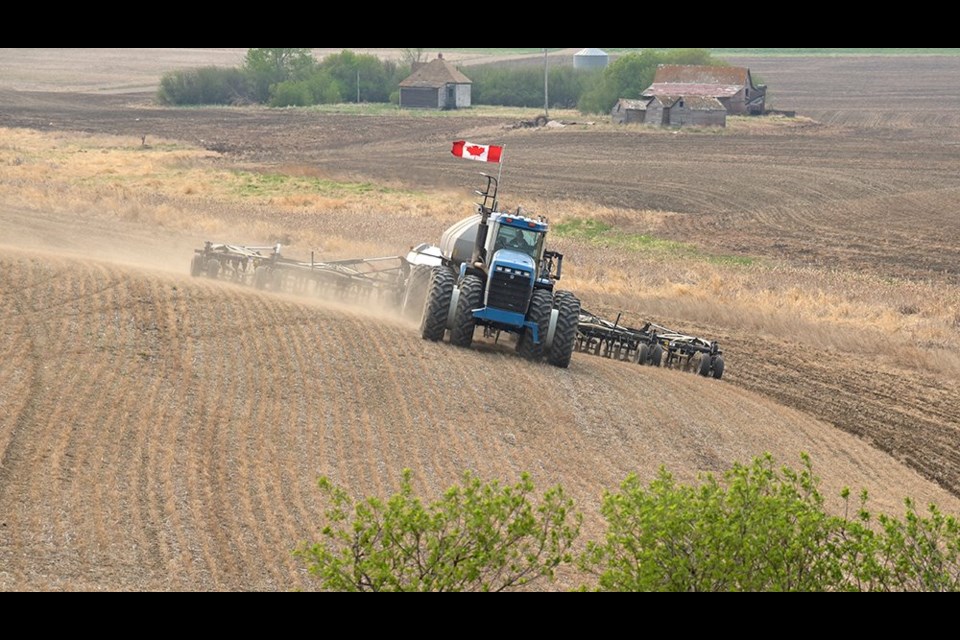WESTERN PRODUCER — Census of Agriculture Canadian farms get bigger — what happens if mid-size operators disappear?
In 1996, 17,347 farms in Canada were about two sections in size. Only 4,801 farms were 3,520 acres or larger.
So, 26 years ago, farms with approximately two sections of land were much more common than farms with six sections or more. The Ag Census data from 2001, 2006, 2011 and 2016 produced the same result. There were more 1,120- to 1,600-acre farms in Canada than any other size category, assuming commercial farms are two sections or larger.
In 2021, that changed.
The Agriculture Census of 2021 shows that farms with more than 3,520 acres are now more common than operations with two or 2.5 sections.
In 2021, 9,120 farms were 3,520 acres or larger and 8,962 farms had 1,120 -1,600 acres. That means the largest category of farm (using census data) is now the most common size in Canada, at least for commercial-scale operations.
On May 10, the federal government released the first batch of 2021 ag census data, including information on farm size and the number of farms in Canada.
The data on farm size isn’t shocking, since Canadian grain farms have been getting larger for decades. But the census underestimates the speed of farm consolidation in Canada because the data doesn’t account for a 7,000-acre farm expanding to 12,000 acres, says an agricultural economist in Ontario.
“Nationally, the only growth… in these acreage categories is in the very large category,” said Al Mussell, research director with the Canadian Agri-Food Policy Institute.
But the largest category is open-ended — 3,520 acres and higher.
“If I operated 10,000 acres in the 2016 census and have since doubled to 20,000 acres… nothing has changed (for the census data),” he said, because the 20,000 acre farm is still counted as one farm that is 3,520 acres or larger.
Looking at the trend another way, the number of farms with 1,120 – 1,600 acres dropped about 50 percent from 1996 to 2021. In that same 25-year period, the number of large operations (3,520 acres +) has doubled.
“Many farms have consolidated and become increasingly larger both in terms of sales and number of employees,” Statistics Canada wrote in the 2021 ag census. “Conversely, smaller and mid-sized farms are declining in Canada, thereby impacting the rural landscape and profile of Canadian regions.”
Last fall Mussell wrote a report on this trend, entitled Stratification in Canadian Agriculture, Surveying the Implications.
One of the factors behind larger farms is equipment and technology.
“The most tangible thing is the 80-foot drill,” Mussell said, adding that modern sprayers can do an immense amount of farm work in a short amount of time.
“Sprayers used to be a dusty old machine in the back of the shed. Now, you can spend $1 million on a sprayer.”
Economies of scale are also a huge factor, but Mussell’s report dealt with the impacts on the ag industry and rural Canada.
As farm size increases and consolidation continues, it’s likely that rural towns will have fewer people to support churches, service clubs and other organizations.
In many towns, people in the 60-75 age group are the ones doing the work that needs to get done. But in five to 10 years, many in that demographic will want to retire.
“What happens when the caretaker of the rink quits?” said Darren Ippolito, a cattle rancher from Kisbey, Sask. “That’s the problem we have here…. He is 78.”
Another issue is what some describe as a “social license” to farm.
For now, most Canadians and policy makers view farms as family businesses. Thanks to that perception, farms benefit from more financial support and less regulatory oversight than comparable industries.
If the number of farms in Saskatchewan drops to 8,000 (down from 40,000) and some become massive enterprises, will the public and government still assume that farms are family-run businesses?
“The farm is connected to a household and family. This is why we give special treatment around exemptions to regulations, income tax, income stabilization programs,” Mussell said.
“If you let this thing go too far, towards industrialization and consolidation … you’ll lose that (connection between farm and family).”
Farming isn’t that different from construction or forestry in terms of equipment and the nature of the industry. Those sectors have all sorts of rules and regulations that farmers don’t have to think about, around labour codes, safety and other standards.
If farms become too large, government may decide to treat agriculture like other industries. Farmers would lose competitive advantages that exist because of agriculture’s connection to family, Mussell said.
Letting consolidation “run amuck could backfire in ways that we’ve not thought through,” he added.
Larger and fewer farms may represent a risk, but Canada is a free market country. It seems unlikely that a province would impose a cap on farm size or pass rules to discourage consolidation. Also, creating programs that support mid-sized farmers and don’t discriminate against larger operators is not easy.
Maybe the first step is understanding the issue and the potential implications for Canadian ag.
“Recognition of these risks can lead to proactive steps,” Mussell wrote in the paper published last fall. “Perhaps the most fundamental is the creation of awareness that the current trends in farm structure should be expected to lead to disruptive changes.”




